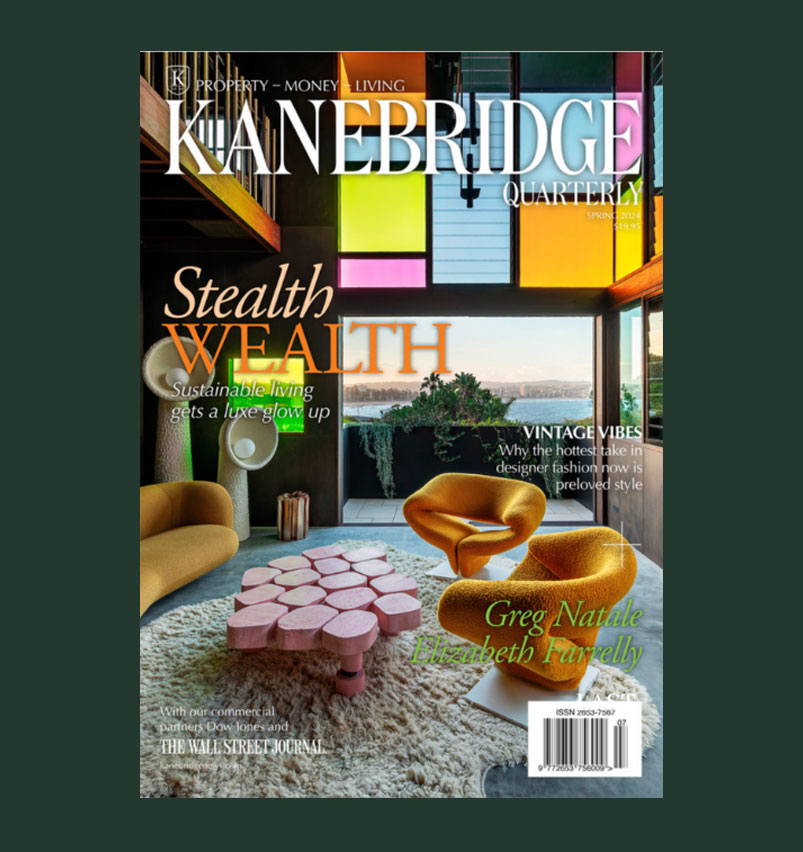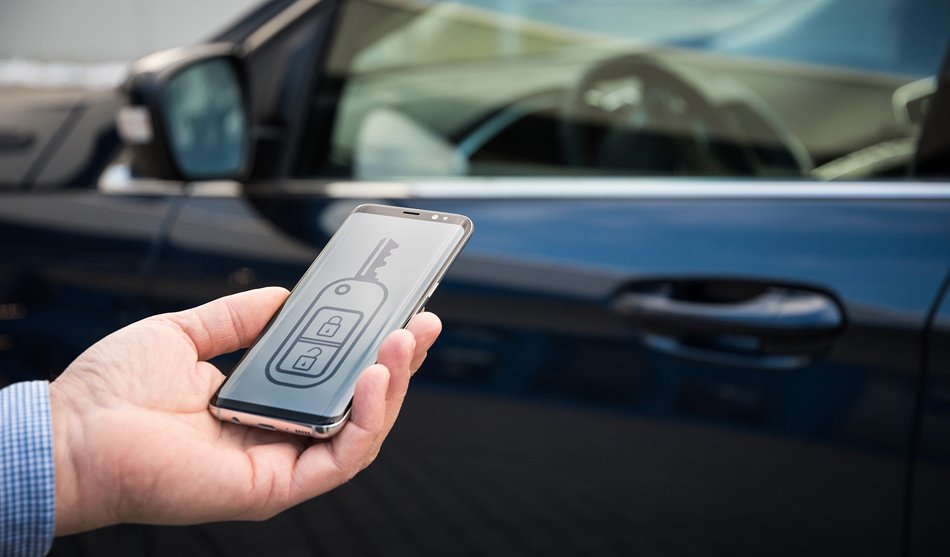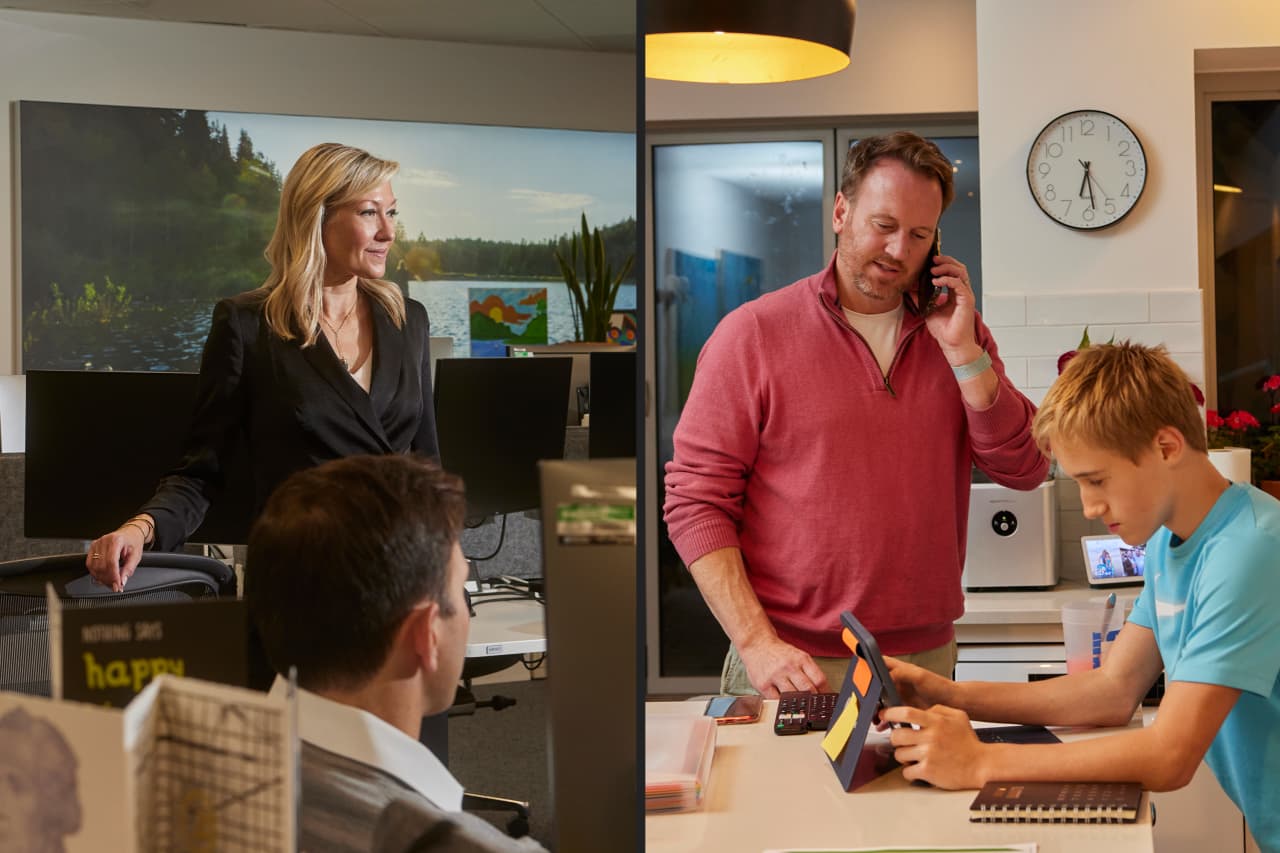The End of Car Keys, Passwords And Fumbling With Your Phone At Checkout
The ultra-wideband, or UWB, technology that powers Apple’s AirTags could reshape how we interact with devices.
For all the attention on tech companies and location tracking in recent years, our gadgets are actually surprisingly bad at knowing precisely where they are at any given moment. That’s about to change.
A straightforward and robust technology, decades in the making, is finally becoming affordable and widespread enough to grant devices not just a basic sense of direction, both indoors and out, but also the ability to precisely locate themselves in three dimensions.
The technology is called ultra-wideband, or UWB. It enables a centimetre-accurate sense of “where” on top of the “when” of computers’ clocks and the “what” provided by cameras and other sensors, and it could lead to all sorts of interesting things that might not be immediately obvious.
It has already become part of a standard backed by Apple, Google, BMW, Volkswagen and others designed to let anyone with a late-model smartphone or Apple Watch unlock and start their cars simply by walking up to them. It could make it easy for us to control any connected light, lock, speaker or other smart-home gadget simply by pointing at it with our phone or watch. It could even, claim its architects, end passwords.
But first, UWB has to overcome the chicken-and-egg problem that always faces new technologies that require many different companies, in many different industries, to spend time and money making their devices wirelessly communicate with one another.
Companies that use it also will have to overcome major privacy issues. Once our gadgets are broadcasting their location at all times, how do we assure that information doesn’t fall into the hands of those who would use it to harm us?
Still, while UWB is in its early days, some applications are already here. The microchips and antennae that make it possible have been in every model of iPhone since the iPhone 11, launched in 2019, as well as newer phones from Google, Samsung, Xiaomi, Oppo and others. It’s also been in the Apple Watch since 2020’s Series 6 model.
Its applications so far include iPhone owners finding their AirTags, sharing files via AirDrop, or amusing their friends with a party trick you can only do with Apple’s HomePod Mini. Owners of newer Samsung phones are using UWB when they find their Galaxy SmartTag+, that company’s answer to AirTags.
In the not-too-distant future, things could get a great deal more interesting. And while many technologies promising transformation of some critical part of our world’s digital plumbing are destined to fall short, there are reasons to believe this one could live up to its potential.
For one: Membership of the FiRa Consortium, a nonprofit developing the UWB standard, is a who’s-who of major tech companies.
UWB is not, in other words, some proprietary part of one tech giant’s walled garden. It’s more like a basic piece of consumer (and industrial) communications infrastructure, like Wi-Fi, Bluetooth or 5G cellular standards.
UWB was developed over the past decade as a way to very precisely locate any object in three-dimensional space, says Dr. Ardavan Tehrani, who is part of a working group at FiRa and also works for Meta Platforms, the company formerly known as Facebook, in a division called Reality Labs.
Previous attempts to track location indoors with existing wireless technologies, like Wi-Fi and Bluetooth, fell short because they were never intended for anything but transferring data, he adds.
UWB, by contrast, triangulates the position of an object by measuring how long it takes radio waves to travel between devices and beacons. It’s a bit like the Global Positioning System technology we use for things like Google Maps, except that GPS involves one-way transmissions from satellites to receivers listening on earth. UWB entails two-way conversations between, say, the chip inside a smartphone and another UWB device.
These beacons can be small—the AirTag is roughly the size of four U.S. half-dollar coins, stacked—and last for years on a single battery. But the technology requires at least a few such beacons nearby for a device to locate itself inside a room.
UWB-compatible chips have the acuity to determine the location of an object to within a centimetre, says Daniel Knobloch, a wireless engineer at BMW and president of the Car Connectivity Consortium. That group has incorporated UWB into its standard, finalized in May of 2021, for opening and starting a car with any smartphone.
Many newer cars have keyless entry systems. This consortium’s new standard enables a vehicle to unlock when a person with a UWB smartphone walks within a certain number of feet of a car. Because access to the car is entirely through a smartphone, it can also be transferred, which could make picking up a rental car at the airport as simple as tapping on a link in a text or email to transform their phone into a “key.”
Similarly, UWB could allow paying at a store checkout without having to figure out exactly where on a payment terminal to mash one’s phone or watch, and entering a building without ever having to swipe a keycard.
A laptop equipped with UWB could recognize that its owner is sitting in front of it, by listening for the signal from her smartphone or smartwatch. It could then automatically log in to any service that person is authorized to use, putting yet another nail in the coffin of passwords, says Dr. Tehrani.
Another potential application: making smart homes easier and more intuitive to use. Bastian Andelefski, an iOS developer in Germany, has demonstrated its potential. In a video posted online, he showed his ability to point his iPhone at any of the smart bulb-equipped lamps in his home, and turn them on or off with a single tap, rather than opening an app and scrolling to the appropriate light, as happens today.
Making this work was expensive and complicated, says Mr. Andelefski, and his hacked-together system is hardly ready for nontechnical users. But with more and more companies rolling out affordable beacons, it’s the sort of thing that could be available to consumers sooner rather than later.
If UWB sounds like some nascent technology long on promise but short on commercially available applications, that also seemed to be the trajectory of, for example, Wi-Fi. It had its origins in the early 1990s and didn’t begin to go mainstream until after Apple incorporated it into its iBook laptop in 1999.
Like Wi-Fi, UWB has a lot of room to improve, and many more applications could arise as a result, says Dinesh Bharadia, an assistant professor at University of California, San Diego, whose lab works on wireless communications and sensing. In research announced in September, his team demonstrated that, using a new kind of beacon, the speed of UWB could be increased by about a factor of 10, while the amount of power it consumes could be decreased by the same amount.
The resulting improvements, which would require only a software update to existing smartphones that use UWB, could allow an object to be located in space every millisecond. This would allow real-time tracking of VR and AR headsets, robots and other automation, pets and livestock, boxes in a warehouse, and anything else to which an AirTag-type UWB device could be attached.
That UWB could be used for so many different applications doesn’t mean that it will be, cautions Dr. Bharadia. One application for which previous indoor-localization technologies have been touted—maps that help us navigate inside buildings, or direct us to the right item on a grocery shelf—have failed for years. There are two reasons for this, says Dr. Bharadia, neither really technological: No one has figured out how to make money from indoor mapping, and users don’t seem to really care about a technology that can be replaced by something as simple as adequate signage.
A third reason indoor localization technologies might have failed until now is privacy. Mr. Andelefski found, when using Apple’s own UWB technology, that there are many ways the iPhone’s software and hardware limit a developer’s access. Part of this he attributes to the need to maintain user privacy, and to protect data as sensitive as the precise location of their devices.
Indeed, recent reports of people using Apple AirTags to track cars before stealing them, and to stalk others, show just how sensitive this data can be.
Privacy is a “key consideration” of how the company’s UWB-based technology works, and how developers are allowed to use it, says an Apple spokesman. For example, apps can only use the phone’s UWB-powered location tech when they’re open, and after a user grants permission, so it isn’t possible for apps to track a user’s location in the background, he adds.
“UWB is enabling more accurate location data, and how it’s protected is up to Apple, Google and others,” says Mickael Viot, a member of the marketing working group at the FiRa consortium and also a director of business development at U.S. semiconductor company Qorvo.
The ability to know precisely where they are might seem minor in the pantheon of our gadgets’ superpowers, which include near-instantaneous communication with any point on the globe, sophisticated digital photography, real-time health monitoring, high-performance gaming and the like.
But the potential of UWB is the way it links up with those other technologies. Just as it was impossible to predict that 3G and front-facing cameras would give rise to Snapchat, or that the smartphone itself would transform seemingly every aspect of how we socialize, it’s tough to say just how far this sense of where our things are might take us. Today, it’s a replacement for car keys and passwords, but in the future it could well be part of making important objects in the physical world announce their position and identity to our smart glasses and other augmented-reality interfaces, says Dr. Tehrani.
That is, of course, if companies can first get a handle on the privacy implications of all those objects and devices constantly broadcasting their location.
Reprinted by permission of The Wall Street Journal, Copyright 2021 Dow Jones & Company. Inc. All Rights Reserved Worldwide. Original date of publication: January 9, 2021.
 Copyright 2020, Dow Jones & Company, Inc. All Rights Reserved Worldwide. LEARN MORE
Copyright 2020, Dow Jones & Company, Inc. All Rights Reserved Worldwide. LEARN MORE
This stylish family home combines a classic palette and finishes with a flexible floorplan
Just 55 minutes from Sydney, make this your creative getaway located in the majestic Hawkesbury region.
The remote northern island wants more visitors: ‘It’s the rumbling before the herd is coming,’ one hotel manager says
As European hot spots become overcrowded , travellers are digging deeper to find those less-populated but still brag-worthy locations. Greenland, moving up the list, is bracing for its new popularity.
Aria Varasteh has been to 69 countries, including almost all of Europe. He now wants to visit more remote places and avoid spots swarmed by tourists—starting with Greenland.
“I want a taste of something different,” said the 34-year-old founder of a consulting firm serving clients in the Washington, D.C., area.
He originally planned to go to Nuuk, the island’s capital, this fall via out-of-the-way connections, given there wasn’t a nonstop flight from the U.S. But this month United Airlines announced a nonstop, four-hour flight from Newark Liberty International Airport in New Jersey to Nuuk. The route, beginning next summer, is a first for a U.S. airline, according to Greenland tourism officials.
It marks a significant milestone in the territory’s push for more international visitors. Airlines ran flights with a combined 55,000 seats to Greenland from April to August of this year, says Jens Lauridsen, chief executive officer of Greenland Airports. That figure will nearly double next year in the same period, he says, to about 105,000 seats.
The possible coming surge of travellers also presents a challenge for a vast island of 56,000 people as nearby destinations from Iceland to Spain grapple with the consequences of over tourism.
Greenlandic officials say they have watched closely and made deliberate efforts to slowly scale up their plans for visitors. An investment north of $700 million will yield three new airports, the first of which will open next month in Nuuk.
“It’s the rumbling before the herd is coming,” says Mads Mitchell, general manager of Hotel Nordbo, a 67-room property in Nuuk. The owner of his property is considering adding 50 more rooms to meet demand in the coming years.
Mitchell has recently met with travel agents from Brooklyn, N.Y., South Korea and China. He says he welcomes new tourists, but fears tourism will grow too quickly.
“Like in Barcelona, you get tired of tourists, because it’s too much and it pushes out the locals, that is my concern,” he says. “So it’s finding this balance of like showing the love for Greenland and showing the amazing possibilities, but not getting too much too fast.”
Greenland’s buildup
Greenland is an autonomous territory of Denmark more than three times the size of Texas. Tourists travel by boat or small aircraft when venturing to different regions—virtually no roads connect towns or settlements.
Greenland decided to invest in airport infrastructure in 2018 as part of an effort to expand tourism and its role in the economy, which is largely dependent on fishing and subsidies from Denmark. In the coming years, airports in Ilulissat and Qaqortoq, areas known for their scenic fjords, will open.
One narrow-body flight, like what United plans, will generate $200,000 in spending, including hotels, tours and other purchases, Lauridsen says. He calls it a “very significant economic impact.”
In 2023, foreign tourism brought a total of over $270 million to Greenland’s economy, according to Visit Greenland, the tourism and marketing arm owned by the government. Expedition cruises visit the territory, as well as adventure tours.
United will fly twice weekly to Nuuk on its 737 MAX 8, which will seat 166 passengers, starting in June .
“We look for new destinations, we look for hot destinations and destinations, most importantly, we can make money in,” Andrew Nocella , United’s chief commercial officer, said in the company’s earnings call earlier in October.
On the runway
Greenland has looked to nearby Iceland to learn from its experiences with tourism, says Air Greenland Group CEO Jacob Nitter Sørensen. Tiny Iceland still has about seven times the population of its western neighbour.
Nuuk’s new airport will become the new trans-Atlantic hub for Air Greenland, the national carrier. It flies to 14 airports and 46 heliports across the territory.
“Of course, there are discussions about avoiding mass tourism. But right now, I think there is a natural limit in terms of the receiving capacity,” Nitter says.
Air Greenland doesn’t fly nonstop from the U.S. because there isn’t currently enough space to accommodate all travellers in hotels, Nitter says. Air Greenland is building a new hotel in Ilulissat to increase capacity when the airport opens.
Nuuk has just over 550 hotel rooms, according to government documents. A tourism analysis published by Visit Greenland predicts there could be a shortage in rooms beginning in 2027. Most U.S. visitors will stay four to 10 nights, according to traveler sentiment data from Visit Greenland.
As travel picks up, visitors should expect more changes. Officials expect to pass new legislation that would further regulate tourism in time for the 2025 season. Rules on zoning would give local communities the power to limit tourism when needed, says Naaja H. Nathanielsen, minister for business, trade, raw materials, justice and gender equality.
Areas in a so-called red zone would ban tour operators. In northern Greenland, traditional hunting takes place at certain times of year and requires silence, which doesn’t work with cruise ships coming in, Nathanielsen says.
Part of the proposal would require tour operators to be locally based to ensure they pay taxes in Greenland and so that tourists receive local knowledge of the culture. Nathanielsen also plans to introduce a proposal to govern cruise tourism to ensure more travelers stay and eat locally, rather than just walk around for a few hours and grab a cup of coffee, she says.
Public sentiment has remained in favour of tourism as visitor arrivals have increased, Nathanielsen says.
—Roshan Fernandez contributed to this article.
This stylish family home combines a classic palette and finishes with a flexible floorplan
Just 55 minutes from Sydney, make this your creative getaway located in the majestic Hawkesbury region.






















